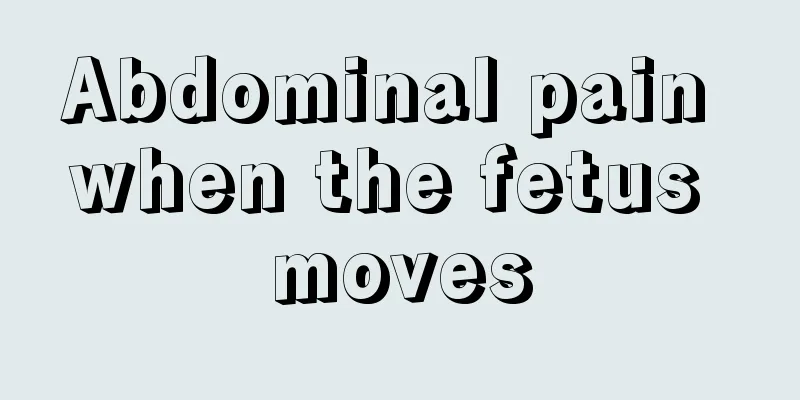West China experts remind you: Never endure the pain in your body, 7 methods can help you relieve it!

|
Pain is an indescribable and uneasy feeling. Chronic pain refers to pain that persists or recurs for more than 3 to 6 months. Various types of chronic pain have become "companions" in people's lives. There are more than 300 million chronic pain patients in my country. Chronic pain is the most common health problem associated with long-term disability among the elderly. It is one of the third most serious chronic diseases that seriously affect human life and quality of life after cardiovascular and cerebrovascular diseases and tumors. Due to impaired cognitive and sensory functions, depression, or the belief that pain is part of the aging process, the elderly choose to endure it in silence, or they cry out in pain all day long but do not seek medical treatment. The daily lives of the elderly who suffer from chronic pain for a long time are seriously affected. As family members, what can we do when facing the chronic pain of the elderly to make them relax and feel more comfortable? Let’s talk about them one by one: 1. Chronic pain in the musculoskeletal system The most common chronic pain in clinical practice refers to pain in muscles, bones, ligaments, tendons and nerves. Low back and leg pain (intervertebral disc herniation, lumbar bone hyperplasia, third lumbar vertebra hypertrophy, lumbar spondylolisthesis, etc.) , cervical spondylosis, knee joint disease, frozen shoulder and other bone and joint diseases account for 60% of the causes of chronic pain . Image source: Photo Network 2 Neuropathic pain Neuropathic pain (NeP) can be spontaneous or induced, and is usually manifested by hyperalgesia (increased response to painful stimuli) and allodynia (painful response induced by non-painful stimuli). Neuropathic pain is difficult to treat and can easily develop into chronic, intractable pain if it persists for a long time. Common symptoms include trigeminal neuralgia, postherpetic neuralgia, and diabetic peripheral neuropathy pain . Image source: Photo Network Previous studies have reported that NeP is an important and independent risk factor for reduced physical and mental health in the general elderly population. 3. Chronic headache and maxillofacial pain Chronic headache and maxillofacial pain were defined as headache or maxillofacial pain occurring on at least half of the days in a 3-month period . The most common chronic maxillofacial pain was temporomandibular pain. Common types include post-traumatic trigeminal neuralgia, persistent idiopathic maxillofacial pain , etc. 4Cancer pain Chronic cancer pain includes pain caused by the cancer itself (primary or metastatic tumors) and pain caused by cancer treatment (surgery, chemotherapy, radiotherapy, etc.). Image source: Photo Network 5. Chronic postoperative or post-traumatic pain Occurs after surgery or tissue trauma (involving any trauma, including burns) and lasts for more than 3 months after surgery or tissue trauma . The pathogenesis of postoperative chronic pain is not yet fully understood and is a hot topic in the field of pain research. Its pathogenesis mainly includes preoperative high-risk factors, intraoperative nerve damage, and postoperative inflammation. 6. Chronic visceral pain Chronic visceral pain is persistent or recurring pain that originates in the internal organs of the head and neck and in the chest, abdomen, and pelvis. These areas are innervated by the same sensory nerves as the primary internal organs, and the intensity of the pain (visceral referred pain) may not be related to the degree of injury to the internal organs or the intensity of the noxious stimulus to the viscera. Image source: Photo Network 7Chronic primary pain Many chronic pain conditions are of unknown etiology, occur in 1 or more areas, persist or recur for more than 3 months , are closely associated with severe emotional or functional impairment (impairments that affect the patient's daily life and social roles), and cannot be classified as another chronic pain condition. Pay attention—— ● For mild pain with known causes, appropriate measures can be taken to relieve it yourself . ● When unbearable moderate to severe pain occurs, you should go to the hospital promptly and actively report the pain. The doctor will help you eliminate your concerns, guide you on taking medication to control pain in a timely manner, and develop a targeted treatment plan based on the cause of the pain. Never endure the pain and delay treatment. There are 7 common pain treatment methods : Self-healing Common pains are often caused by bad lifestyle habits. While undergoing treatment, it is necessary to improve lifestyle habits and cooperate with various exercises and muscle stretching to effectively and permanently solve the problem of chronic pain. physiotherapy You can go to a traditional Chinese medicine hospital or a regular Chinese medicine clinic to receive Chinese medicine treatments, such as acupuncture, cupping, scraping, massage , etc., to relieve chronic joint pain. Massage has a psychological and physiological soothing and analgesic effect. The most common massage areas are the back and shoulders. It is recommended to use warm lubricant and slow and long movements. Heat Hot compresses can be applied to the painful area, usually for 20-30 minutes . Be sure to pay attention to the temperature. The elderly, especially those with impaired cognitive function or impaired sensation in the applied area, should take care to prevent burns . Distraction Focus your attention on other stimuli instead of the painful sensation, such as talking to others, listening to music, watching TV, singing, etc. relaxation Relaxation is a state of relative freedom without anxiety and skeletal muscle tension. Simple relaxation techniques include deep breathing, abdominal breathing, yawning, etc. Music, massage, etc. are also ways to achieve relaxation. Invasive treatment Precision and minimally invasive treatment are the core concepts of specialized treatment, and are also methods that are particularly suitable for the elderly. Finding the cause of the disease and conducting targeted minimally invasive treatment can effectively help the elderly improve their quality of life. Take medication promptly when necessary Regardless of the type of pain, medication should be used to relieve pain, improve comfort and quality of life using the least invasive and safest route possible. ● When the pain is severe or acute: intravenous administration ● Chronic or moderate pain: usually taken orally Image source: Photo Network If the oral route is not tolerated, non-invasive routes such as rectal or sublingual administration and transdermal routes can be used as alternatives. Drug therapy plays an indispensable role in treating chronic pain in the elderly, but its obvious adverse reactions such as kidney failure, stroke, hypertension, worsening heart failure, and gastrointestinal complications cannot be ignored. Therefore, you must take pain medication under the advice of a professional doctor . Effectively controlling pain and relieving patients' physical pain will also reduce patients' psychological pressure , relieve anxiety and irritability, and enhance patients' confidence and courage in life. Recognize and pay attention to chronic pain in the elderly, and provide them with correct and effective nursing measures in a timely manner so that they can truly get rid of the pain and improve their quality of life. References [1] Cao Boxu, Lin Xiaqing, Wu Ying, et al. Classification and definition of chronic pain[J]. Chinese Journal of Pain Medicine, 2021, 27(01): 2-8. [2] Wei Jianmei, Wang Zhijian, Xia Mei, Ning Yumei, Luo Liting, Xiong Chenyue, Wan Lu, Li Luliu, Zhang Daying. Application of systematic pain nursing management model in clinical pain nursing practice[J]. Chinese Journal of Pain Medicine, 2019, 25(07): 531-536. [3] Treede RD, Rief W, Barke A, Hu Li, Luo Ceng, Chen Jun. ICD-11 classification of chronic pain[J]. Chinese Journal of Pain Medicine, 2015, 21(07): 486-488. [4] Tan Yutian. Research progress on chronic pain in the elderly[J]. Journal of Nursing, 2015, 30(10): 109-112. Content Production Source: National Clinical Research Center for Geriatric Diseases (West China Hospital, Sichuan University) Editor: Yang Yali Map: Eastern Zhou Dynasty |
>>: 【World First Aid Day】Protect lives, “rescue” around you
Recommend
What are the consequences of cupping during menstruation?
It is best for female friends not to cupping duri...
What are the steps for women to take care of their skin?
Every female friend will try every means to take ...
What are the dangers of pelvic inflammatory disease symptoms
Pelvic inflammatory disease is a type of gynecolo...
Can I get pregnant if I have irregular menstruation?
If a woman has irregular menstruation or cold ute...
How to maintain ovaries after hysterectomy?
The ovaries and uterus are the most important rep...
Pictures of blood clots falling out during menstruation
Female friends may experience blood clots during ...
Is it a disease if the right breast is bigger than the left breast?
Someone asked if it is a disease if the right bre...
With 120 minutes left before sudden death from myocardial infarction, what else can we do?
I hope everyone can master a little more first ai...
Why do women have water coming out from their vagina?
Leucorrhea is very important for women. Leucorrhe...
When does frequent urination during pregnancy end?
Frequent urination during pregnancy is a problem ...
The best way to maintain your uterus
Everyone has their own attitude towards life. Man...
Family planning and contraceptive knowledge class
The family planning policy affects daily life, an...
Does eating instant noodles often affect the fetus during pregnancy?
In the early stages of pregnancy, many pregnant w...
Farting smells bad during early pregnancy
In the early stages of pregnancy, pregnant women ...
The main causes of female infertility
Female infertility is caused by insufficient kidn...
![[Doctors Talk About Medicine] Safety and Risk: Exploring the Precautions for Anesthesia and Pain Treatment in the Elderly](/upload/images/67f17b350baee.webp)








